- Learning Information
- Introduction
- Preparation
- Materials/Tools
- Prior Knowledge
- Project
- Evaluation
- Support Materials
- Education Standards
- Portfolio Pages
Learning Information
- ToL Learner Level:
- Beginner; Intermediate
- Target Grade/Age Level:
- High School (Ages 15-18).
- Can be modified for many age/grade levels
- Learning Objective(s). Learners will:
- Plan and build an ecobottle (or eco-column) out of five 2-liter bottles that will include an acquatic section, a decomposition section, and a terrestrial section. Observe the ecobottle for 4 to 6 weeks and record their hypotheses, observations and analyses in their science notebooks. Create a treehouse for each ecobottle group, based on their research of this simulated ecosystem.
- Type of Activity
- Classroom resource
- Science Subject / Key Words
- Biodiversity;
- Ecology;
- Life History & Development;
- Methods, Techniques, Apparatus
- AZ State Education Standards: (view standards):
- Science
- National Education Standards (view standards):
- Biology, Life Science
- Suggested Time Frame
- This project needs to be developed over the course of several months so that students have time to create and then observe changes in their ecosystem bottles.
- Curricular Areas:
- Mathematics
- Language:
- English
- Teaching and Learning Strategy:
- Inquiry Learning;
- Hands-on Learning;
- Technology Integration/Computer Assisted Instruction
- Grouping:
- Large Group instruction;
- Small Group instruction
Introduction
Welcome to the Teacher Resource Page about constructing, observing and documenting Ecobottles in a trehouse on the Tree of Life! This project was a collaborative effort between science teacher Jeff Hartman and science teaching fellow Kathryn Orzech in the classroom at City High School in Tucson, Arizona. Lisa Schwartz, the Learning Materials Editor for the Tree of Life (ToL) supported the project from behind the scenes, working with Kathryn to design hands-on lessons for the students to increase their knowledge of web-page building, and editing student work at the conclusion of the project. Below you will find a step-by-step guide to the joys and pitfalls of building ecobottles with students and working with them to document their work in a webpage form.
Preparation
To prepare for the ecobottle activity,we did the following:
- Familiarized students with the concept of an ecosystem
- Set the goal for students of creating a mini-ecosystem that would flourish for the duration of the project (requiring instruction on food webs)
- Worked with students on basic research skills, such as developing hypotheses
- Introduced students to tools used to build a webpage on the Tree of Life website
Physical Materials and Tools
- Ecobottle-Building (provided by the teacher)
- Aluminum or Nylon mesh (for the tops of columns)
- Aquarium Gravel
- Cardboard box top (for cutting bottles)
- Compost
- Drill (small, to drill holes in caps of bottles)
- Elodea/Hardy Water Plant
- Fast-growing plant seeds, such as beans and radishes
- Filter paper (we used coffee filters)
- Gravel (to mix with soil in terrestrial section)
- Grass Seed
- Markers (to mark where to cut on bottles)
- Sand
- Scissors
- Soil
- Tape, clear (3 or 4 large rolls, minimum)
- X-acto knives (2 or 3)
- For Website-Building
- Computer with internet access
- Digital cameras to share across groups
- List of website requirements (how many pictures, what sections should it include?)
- Ecobottle-Building, Provided by the Students:
- 5 2-Liter (or 3-Liter) bottles per group, washed out with labels removed
- Organisms for the ecobottle - some possibilities:
- Terrestrial: small frog, non-poisonous spider, praying mantis, land snail(s), crickets, fruit flies
- Decomposition: fruit flies, mealworms, cockroach, other beetle, pill bugs (roly-polys), dead leaves, grass clippings, fruit
- Aquatic: guppies, pond snail, algae, betta fish
- A few links to helpful sites for materials (caution, clicking on these links will open the link in this window):
- Bottle Biology Tool Box
- Fast Plants - Planting and Fertilizing
- Supermarket Science (Science and Plants for Schools) from the UK
Prior Knowledge
Before starting the project, a general knowledge of the scientific method is recommended. Before building the ecobottles, students should conduct research about (or be provided with information about)various organisms that they might choose to put in their ecobottles.
Project
We (Jeff and Kathryn) knew we wanted students to be able to complete the ecobottle project, including constructing ecobottles, observing them for 4 to 6 weeks, and documenting their findings on a Tree of Life Investigation Treehouse, during one semester of freshman science class. We focused on this project for one 2-hour block per week ("Science Fridays") but students also completed observations and care of their ecobottles on some non-Friday days.
One of the most important things, especially for two teachers working together (but that would also be useful for a single teacher) was creating a semester-long timeline, working back from the last day of the semester, when students would present their work, to the first day when the idea of making a web page on the Tree of Life about their semester-long science proejct would be introduced. Click below to download our initial timeline in Word format.
 View InitialTimelineforEcobottleProject.doc
View InitialTimelineforEcobottleProject.doc
II. Background Lessons Related to the Tree of Life
Giving students a strong grounding in the Tree of Life and webpage-building is an important first step for the project, so we started by giving an introduction to the Tree of Life. Students had to explore a scientist, created page or a treehouse in pairs and report to the class on what they had found. This activity familiarized students with a few aspects of the ToL and enabled them to interact with the site.
Look at the interactive Webquest Introduction to Learning with the Tree of Life
We also gave a lesson focused on the importance of documenting one's work in science, but if we had to do over, we might have delivered this lesson a bit later, since at the point we gave it, students had not yet built their ecobottles and so talk about documenting them was fairly abstract.
Look at the Documenting Research Lesson
III. Permission Slips
We gave the students permission slips that their parents could complete to allow their son or daughter to display his or her name and/or photo on their treehouse website. Without this signed permission form, students are identified online only by a psuedonym and cannot be pictured, because they are under 18 years old. We did not have a Spanish-language version of this form, but that might have been helpful considering the relatively large percentage of Arizona residents for whom Spanish is a first language. Click below to download the permission form we used in Word format.
 View ToLClassroomPermission.doc
View ToLClassroomPermission.doc
IV. Dividing Students into Groups and Assigning Roles
We asked students who they would like to work with for the project, since it would take nearly an entire semester, and took those requests into account as much as we could when crafting groups. Previous experience creating webpages was not an issue, as the Tree of Life web tools are similar to but distinct from other web-page creation programs like Microsoft's Front Page.
Click below to download the introductory worksheet we used to introduce the project and ask for student input on groups.
 View 090205EcobottleIntroChoosingGroup.doc
View 090205EcobottleIntroChoosingGroup.doc
We assigned students to work in groups of 3 or 4. We had three roles per group, which were:
- Webmaster:
- the person who keeps the master plan of the group's webpage and can delegate website-building tasks as the publication date for the pages nears
- Lead Biologist:
- the person who has the final say on which organisms go into the Ecobottle - they supervise construction and record the group's hypotheses about what will happen in their ecobottle
- King or Queen of Analysis:
- the person who is in charge of the analysis section of the webpage, responsible for determining what types of analysis to use and carrying them out with the help of their group
If a group had more than 3 students, any of the roles could accomodate an additional person - often, the fourth person was made a co-webmaster and given responsibility for part of the final page. To download the Ecobottle Roles worksheet we used in Word format, click below.
 View RolesforEcobottleGroups.doc
View RolesforEcobottleGroups.doc
V. Registering the Students as Treehouse Builders
If students are under 18 years of age, they cannot register on the site with their own emails - to do a class project, they must be registered under a psudonym by a teacher. We chose group psudonyms based on the most prominant organism students were planning to include in their ecobottle - for example, the Snails and the Guppies - or a name that the students preferred - for example, the Mutants. We did not set passwords, but we would recommend that, even when working with high school students, the teacher set the student's passwords, so the teacher will have a record of the passwords when students may forget theirs.
To view a sample classroom project form and learn more about registering students as treehouse builders, click here
When students log in for the first time, they will be prompted to type in their real name so that the teacher can see their real name next to their psudonym on any page they have contributed. Teachers can see all their student groups on their Classroom Manager page, and look at the pages contributed by each group. Because it is easy to create new pages, we insisted that students mark one of their pages "Master Page" and add all pertinent information to that page so we could avoid looking through 5 to 20 pages that might or might not contain pertinent information.
VI. Bellwork Related to Ecobottles
We attempted to find short articles related to self-contained ecosystems for students to read as Bellwork on the days we worked on the ecobottle project.
Follow the link here to go to a MSN Encarta encyclopedia article on ecosystems.
We also visited Biosphere 2 here in Southern Arizona. We used an article from United Airlines Hemispheres magazine (June 1999 Issue, p. 104-110) but other articles are certainly available. (Click here to go to the United Airlines website to learn about ordering back issues of the magazine)
VII. Laying Plans and Gathering Materials for Ecobottles
The EcoColumn Assembly Guide Text, part of a much-copied, anonymous ecobottle construction sheet, gives ideas for chamber components.
 View EcoColumnAssemblyGuideText.pdf
View EcoColumnAssemblyGuideText.pdf
One possible component is fruit flies; the document below illustrates in pictures and words how to trap fruit flies.
Before building their ecobottle, we asked students to draw a diagram of their ecobottle and its contents and also think about food web relationships that would take place within their bottle.
 View 092605EcobottleHabitatDescriptionBeforeBuilding.doc
View 092605EcobottleHabitatDescriptionBeforeBuilding.doc
VIII. Setting Up the Ecobottles
We used an assembly guide to guide students in putting together the bottles. The EcoColumn Assembly Guide depicts how to cut the bottles to wind up with an assembled column made up of 5 2-liter bottles.
 View EcoColumnAssemblyGuide.pdf
View EcoColumnAssemblyGuide.pdf
As students set up their ecobottles, we asked them to complete a watering schedule so each person would have assigned times to water the bottle so it would not dry out. Download the watering schedule template we designed below.
 View 092305WateringSchedule.doc
View 092305WateringSchedule.doc
We also asked them to record their hypotheses for the first five days on a hypothesis chart. This chart asked them to construct a hypothesis for each organism in their ecobottle and asked them to record how they would test that hypothesis.
 View 092305EcobottleHypothesisAnalysisChartFirst5Days.doc
View 092305EcobottleHypothesisAnalysisChartFirst5Days.doc
IX. Observing the Ecobottles
After students built their ecobottles, we gave them several aids for observing them in a scientific way. The first worksheet below presents "points to ponder" when monitoring their ecobottles, while the second instructs students in making observations. The third poses nine questions the students could answer about their ecobottle.
 View 092605MonitoringEcobottlesInfo.doc
View 092605MonitoringEcobottlesInfo.doc
 View 093005EcobottleAssignmentMakingObservations.doc
View 093005EcobottleAssignmentMakingObservations.doc
 View 101005EcobottleAssignment9QuestionsAboutEcobottle.doc
View 101005EcobottleAssignment9QuestionsAboutEcobottle.doc
X. Beginning the Treehouse Webpage
About a month into the project, we began incorporating adding data to student treehouses as part of weekly or biweekly assignments. Below you can download the handout we gave to students to guide their Treehouse building and show them the general content we expected on their webpages.
 View 102005EcobottleTreehouseContentChecklist.doc
View 102005EcobottleTreehouseContentChecklist.doc
XI. More Ecobottle Assignments
As the project continued, we set up lessons on pH and had students begin tracking the pH of their ecobottles, and for Halloween had students make tombstones to commemorate the organisms that had died in their ecobottles. We asked them more questions about their ecobottle - specifically, what died, what thrived, and why they thought this happened.
 View 102705EcobottleAssignmentpHandTombstones.doc
View 102705EcobottleAssignmentpHandTombstones.doc
 View 102805EcobottleQuestionsWhatDiedWhatThrived.doc
View 102805EcobottleQuestionsWhatDiedWhatThrived.doc
To analyze their ecobottle data, we asked students to make a graph in Excel for as much temperature and pH data as they had recorded. We also asked them to make a Venn diagram comparing their ecobottle with another econbottle in the class. Finally, we had them make "detail drawings" of organisms that were living (or had been living) in their bottle.
 View 110405KingsandQueensofAnalysisMakeExcelGraphsforTempandpH.doc
View 110405KingsandQueensofAnalysisMakeExcelGraphsforTempandpH.doc
 View 110405LeadBiologistVennDiagram.doc
View 110405LeadBiologistVennDiagram.doc
 View 110405WebmasterDetailDrawings.doc
View 110405WebmasterDetailDrawings.doc
Venn Diagram
Detail Drawings


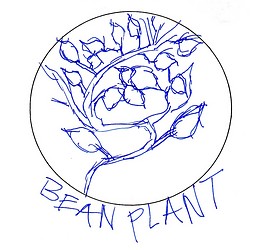
Left © 2005 Snail1, right: © 2005 Ninja5.
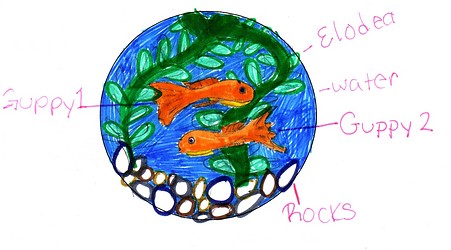
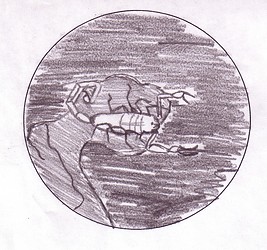
Left: © 2005 Guppy5, right: © 2005 Mutant1.
XII. Finishing Up the Treehouse Webpage
To finish the pages, we asked each group's webmaster to report on what was complete and to asign themselves and their group members discrete tasks to complete the imcomplete parts of the group page.
 View 112205WebmasterAssignmenttheFinalWebsiteChecklist.doc
View 112205WebmasterAssignmenttheFinalWebsiteChecklist.doc
 View 112205TreeofLifeTreehouseAssignmentforEachStudent.doc
View 112205TreeofLifeTreehouseAssignmentforEachStudent.doc
XIII. Ecobottle Pictures
Follow the link here or below under the Portfolio Pages heading to view the portfolio of completed pages for this project
This is what a completed ecobottle looks like:
Here is a closup of a terestrial section (and also decomposition: this group planted grass seed in both sections):
Here is a decomposition section with fruit beginning to mold:
This is a closeup of an aquatic section. This group's guppies thrived the entire duration of the project!
Evaluation
After publication of their treehouses, we asked groups of students to present their treehouses to the class. We gave out a handout to allow other students to provide some basic constructive feedback to their peers (see Ecobottle Evaluation Student under Support Materials). We did not use a formal rubric to grade student treehouses, although there are rubrics available on this site.
Support Materials
- Learner Section
- .
 Worksheet
090205EcobottleIntroChoosingGroup.doc
Worksheet
090205EcobottleIntroChoosingGroup.doc
 Instructions
090205FruitFlyTrap.doc
Instructions
090205FruitFlyTrap.doc
 Worksheet
092305EcobottleHypothesisAnalysisChartFirst5Days.doc
Worksheet
092305EcobottleHypothesisAnalysisChartFirst5Days.doc
 Worksheet
092305WateringSchedule.doc
Worksheet
092305WateringSchedule.doc
 Worksheet
092605EcobottleHabitatDescriptionBeforeBuilding.doc
Worksheet
092605EcobottleHabitatDescriptionBeforeBuilding.doc
 Worksheet
092605MonitoringEcobottlesInfo.doc
Worksheet
092605MonitoringEcobottlesInfo.doc
 Worksheet
093005EcobottleAssignmentMakingObservations.doc
Worksheet
093005EcobottleAssignmentMakingObservations.doc
 Worksheet
101005EcobottleAssignment9QuestionsAboutEcobottle.doc
Worksheet
101005EcobottleAssignment9QuestionsAboutEcobottle.doc
 Worksheet
102005EcobottleTreehouseContentChecklist.doc
Worksheet
102005EcobottleTreehouseContentChecklist.doc
 Worksheet
102705EcobottleAssignmentpHandTombstones.doc
Worksheet
102705EcobottleAssignmentpHandTombstones.doc
 Worksheet
102805EcobottleQuestionsWhatDiedWhatThrived.doc
Worksheet
102805EcobottleQuestionsWhatDiedWhatThrived.doc
 Worksheet
110405KingsandQueensofAnalysisMakeExcelGraphsforTempandpH.doc
Worksheet
110405KingsandQueensofAnalysisMakeExcelGraphsforTempandpH.doc
 Worksheet
110405LeadBiologistVennDiagram.doc
Worksheet
110405LeadBiologistVennDiagram.doc
 Worksheet
110405WebmasterDetailDrawings.doc
Worksheet
110405WebmasterDetailDrawings.doc
 Worksheet
112205WebmasterAssignmenttheFinalWebsiteChecklist.doc
Worksheet
112205WebmasterAssignmenttheFinalWebsiteChecklist.doc
 Worksheet
112205TreeofLifeTreehouseAssignmentforEachStudent.doc
Worksheet
112205TreeofLifeTreehouseAssignmentforEachStudent.doc
 Worksheet
121605EcobottleEvaluationStudent.doc
Worksheet
121605EcobottleEvaluationStudent.doc
 Worksheet
RolesforEcobottleGroups.doc
Worksheet
RolesforEcobottleGroups.doc
Education Standards
State Education Standards
- AZ Education Standards
- Science
National Education Standards
- National Education Standards
- Biology, Life Science
Information on the Internet
- Care of Living Materials in Eco-columns Answers those questions: what do guppies and snails eat? What do crickets eat?
- Plants in the Eco-Column Student Resources: questions to get you thinking
- Bottle Biology - TerrAqua Columns The "Fill" page to decide what to put in; the "Observe" page to help on deciding what to observe
- Food Webs 1 British site illustrates a pond food web
- Food Webs 2 Simple "chain reaction" game illustrates basics of a food chain
- Food Webs 3 Game with pond, meadow and arctic food webs
- Food Web 4 Basic information on food chains and food webs
- Terrariums Fact sheet on terrariums
- Aquariums Information on freshwater aquariums, including a listing of fish by common name that gives information on each species (including diet and tempeature preference)

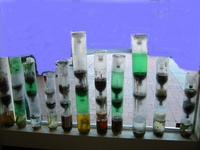
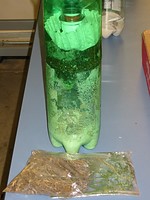
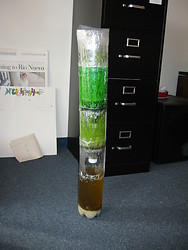

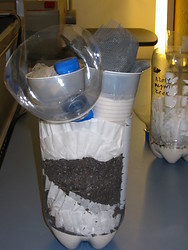
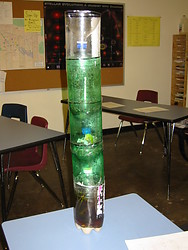

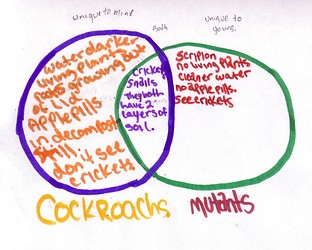

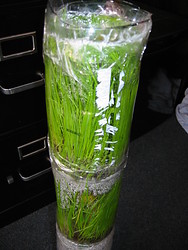
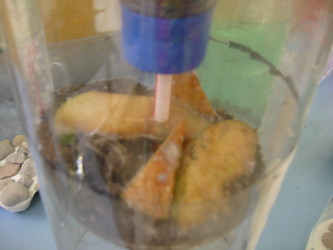

 This page was developed
as part of the project "New Strategies for Life Sciences Outreach in
Arizona: Developing a Digital Library of Audio and Video Features in the
Context of the Tree of Life Web Project" funded by the “Anyplace
Access for Arizonans” Initiative under the
This page was developed
as part of the project "New Strategies for Life Sciences Outreach in
Arizona: Developing a Digital Library of Audio and Video Features in the
Context of the Tree of Life Web Project" funded by the “Anyplace
Access for Arizonans” Initiative under the 


 Go to quick links
Go to quick search
Go to navigation for this section of the ToL site
Go to detailed links for the ToL site
Go to quick links
Go to quick search
Go to navigation for this section of the ToL site
Go to detailed links for the ToL site